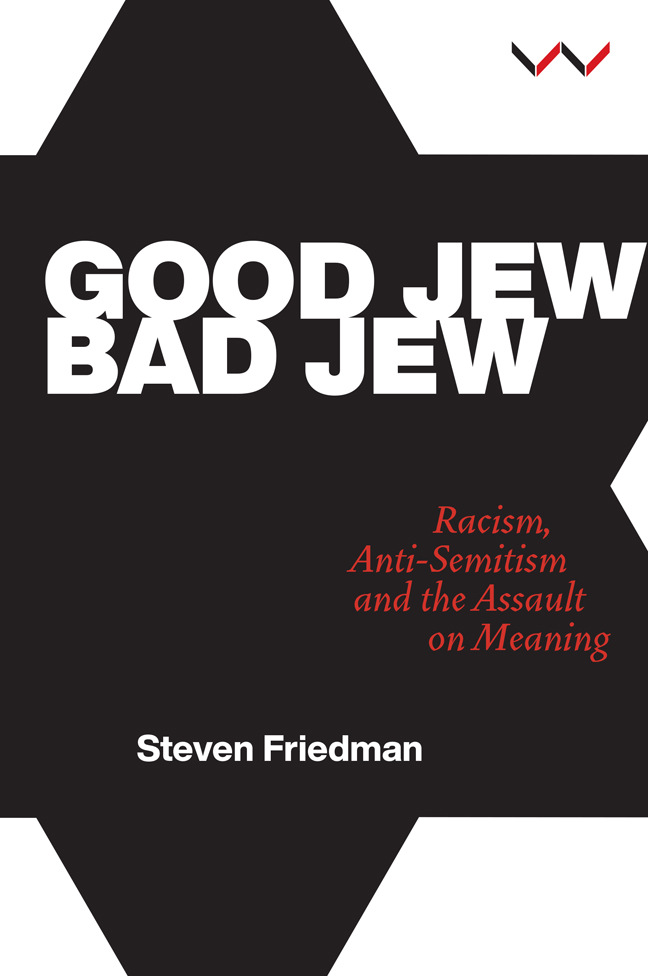Book contents
- Frontmatter
- Contents
- Acknowledgements
- Introduction: The Tenacity of Race Bias
- Chapter 1 Turning Anti-Semitism on its Head
- Chapter 2 Making ‘Good Jews’ White and European
- Chapter 3 What Anti-Semitism Really Is
- Chapter 4 The Israeli State as a ‘Cure’ for Anti-Racism
- Chapter 5 Zionism as an Escape from Jewishness
- Chapter 6 Mimicking the Oppressor
- Chapter 7 Two Religions and the Nightmare the West Created
- Chapter 8 Colonising Anti-Racism
- Conclusion: The ‘New Anti-Semitism’ and Politics Today
- Notes
- Bibliography
- Index
Chapter 3 - What Anti-Semitism Really Is
Published online by Cambridge University Press: 02 March 2024
- Frontmatter
- Contents
- Acknowledgements
- Introduction: The Tenacity of Race Bias
- Chapter 1 Turning Anti-Semitism on its Head
- Chapter 2 Making ‘Good Jews’ White and European
- Chapter 3 What Anti-Semitism Really Is
- Chapter 4 The Israeli State as a ‘Cure’ for Anti-Racism
- Chapter 5 Zionism as an Escape from Jewishness
- Chapter 6 Mimicking the Oppressor
- Chapter 7 Two Religions and the Nightmare the West Created
- Chapter 8 Colonising Anti-Racism
- Conclusion: The ‘New Anti-Semitism’ and Politics Today
- Notes
- Bibliography
- Index
Summary
In his 2018 book, The Jewish American Paradox: Embracing Choice in a Changing World, Robert Mnookin, a long-time leader in American Jewish organisations, writes: ‘To me “anti-Semitic” does not mean “critical of Israel” or “opposed to the Zionist project”; it means having prejudice against or hatred of Jews.’ As the previous chapter suggests, this is an extremely unusual view among leadership figures in Jewish organisations in the United States (or anywhere else). But it is entirely accurate.
FROM FAITH TO RACE
Prejudice against Jews is very old, though not as old as some historians claim.
Understanding this prejudice is complicated by the fact that Jews are both adherents of a religion and members of an ethnic group. Anti- Jewish prejudice may thus express religious intolerance, ethnic bigotry or both. Originally, it was a prejudice against the Jewish religion – although, as always, history is a little more complicated than it seems. The prime source of the prejudice was European Christianity. In Muslim countries, Jews were regarded as dhimmi – they were not treated entirely as equals but were protected and were free to practise their religion. The period of Muslim rule in Spain was a ‘golden age’ for Jews. One of them, Shmuel ha-Nagid, was appointed the vizier of Granada – effectively prime minister, 4 a role that no Jew was afforded in Christian countries. This did not mean that Jews enjoyed equal rights; the idea that any individual enjoyed rights simply because they were human was yet to take root. But it did mean that Jews were more likely to be tolerated than in Christian Europe.
As the previous chapter suggested, Christian Europe was deeply prejudiced against Muslims and Jews. From the eleventh century, Christian countries embarked on crusades to wrest Jerusalem, in particular, and the ‘Holy Land’ in general, from Muslim rule. But the hostility to Jews was far more intense than antipathy to Muslims for reasons both religious and mundane; the Crusaders slaughtered Jews on their way through Europe to Jerusalem. The religious antipathy against Jews stemmed from the Christian Bible in which they were portrayed as killers of the Christ. The dominant Christian view of Jews and their religion was supersessionism, the claim that Christians had replaced Jews as the people of God and so God’s back had been turned on the Jews.
- Type
- Chapter
- Information
- Good Jew, Bad JewRacism, Anti-Semitism and the Assault on Meaning, pp. 51 - 67Publisher: Wits University PressPrint publication year: 2023

